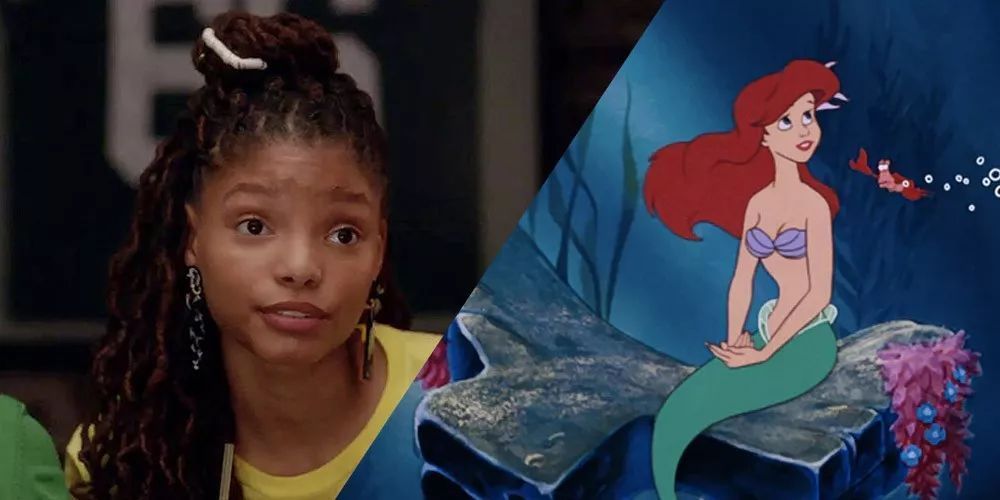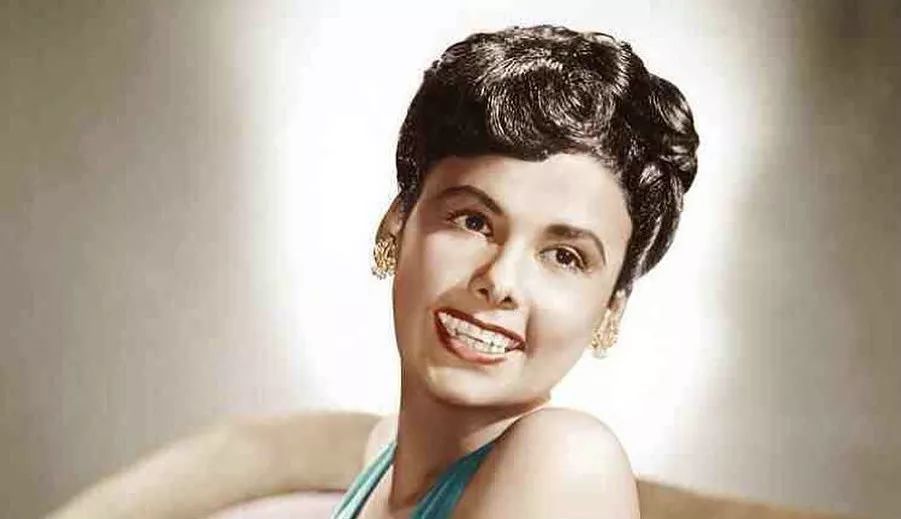
C计划是一家致力于批判性思维教育的机构。C计划的C,是指Critical Thinking(批判性思维),Civic Education(公民教育)。推广思辨教育,重塑公共理性。
Little black mermaid, do you like it? |Aspects No.22
In July 2019, Disney announced the heroine of the live-action version of the animated film The Little Mermaid. 19-year-old R&B singer and actress Halle Bailey is about to become the new "Ariel". The casting result was like a bombshell on social media, and it was clearly Berry's black identity that ignited the controversy. Many netizens objected to a black actor playing The Little Mermaid on the grounds of "destroying childhood", and they hoped that Disney would follow the tradition and choose a red-haired and white-skinned Ariel. One Twitter user quipped, "Nice job! We want blond Mulan now!"

And Halle Berry's supporters clearly stated that the new era requires a new understanding of classic works and a new interpretation of the role. Director Rob Marshall (Rob Marshall) said in an interview that Berry deserves it, she has all the qualities the role needs: energy, enthusiasm, youth and a good voice. Meanwhile, Jodi Benson, the voice of Ariel in Disney's 1989 animated version of The Little Mermaid, also publicly expressed her support for Berry, saying "we need a good, more modern story." . The Washington Post article also criticized (white) opponents of the "Not My Ariel" hashtag (#NotMyAriel), pointing out that this "white nostalgia" is exactly what Trump is trying to exaggerate during the campaign. Sentiment, meaning "the white working class has been marginalized in this country's growing diversity."

Why was the casting of The Little Mermaid so controversial? Is The Little Mermaid being played by a black actor against the book? Is "adaptation" of film and television production a problem more broadly? If adaptation in the ordinary sense is not an issue, can a character's skin color be "adapted"? In this issue, we will discuss with you layer by layer.

Is the Little Mermaid being played by a black actor against the book?
Viewpoint 1
Yes, the Little Mermaid should be played by a white man to be in line with the original.
Danish fairy tale master Andersen's fairy tale "The Daughter of the Sea" describes the poignant love story of the Little Mermaid. In Andersen's original works, he used words such as "white and tender hands" and "white arms" several times to describe the appearance of mermaids. From this perspective, the Little Mermaid "should" be a white-skinned mermaid.
In addition, in the animated feature film "The Little Mermaid" produced by Disney in 1989, the heroine Ariel was also portrayed as a white-skinned mermaid girl. In Disneyland, Ariel is also often played by white actors, or sculpted as a white-skinned image. Therefore, for Ariel's loyal fans, the casting of the new series completely deviates from the original book of "The Little Mermaid". For them, a "blue-eyed, red-haired, white-skinned and green fish-tail" little mermaid was a reasonable request.

View 2
The black-skinned Little Mermaid is not against the original.
On the contrary, some people believe that not anything inconsistent with the details of the original work is considered a "violation" or "violation" of the original work, and the adaptation of the work does not mean an accurate copy and restoration of the original work.
In fact, in Andersen's original book, the color of the Little Mermaid's skin doesn't matter at all in this love tragedy, compared to more important character traits, such as her beautiful singing voice. If you really want to say "violation" of the original book, I am afraid that Disney's 1989 version of the animated film is much more serious - Disney changed the tragic ending in Andersen's original book, allowing the little mermaid and the prince to live happily together! Even the name "Ariel" is completely invented by Disney. In "The Daughter of the Sea", the Little Mermaid has no name. Where did the hashtag #NotMyAriel come from?

Furthermore, the mermaid story itself is a myth. Different countries and regions around the world have different legends about mermaids, and her appearance should not have specific racial characteristics. In Andersen's story, the Little Mermaid is the "Atlantic" people of Sea World. Why should she look like a white Danish? Taking a step back, if it must be said that Andersen's fairy tale is based on a white Danish woman, Disney's previous character creation must not be in line with Andersen's setting - Andersen never wrote that The Little Mermaid has "red" hair. Red hair is a typical Celtic trait, and in a high probability, Andersen's white female blueprint is a Danish Germanic, and it just can't be red hair.
There's no reason to think that Ariel in Disney's 1989 animation is "orthodox," while Berry's The Little Mermaid is contrary to the original. As director Rob Marshall said, in today's society, a Danish mermaid can be black or inherit red hair.

Does it not conform to the adaptation of the original, is it a problem?
If we use harsh standards to think that whether it's the 1989 Disney animation, or the current live-action film where Berry plays the Little Mermaid, is it a violation of the original, is the adaptation that violates the original a problem? Can film and television works be adapted from original literary works? In fact, people have always had different standards for the adaptation of film and television works.
Viewpoint 1
The original should not be adapted in any way.
On the web, the most common remark from holders of this view is, if you want a different story, why not write a new one? They argue that violating the original is itself an unacceptable error . Any kind of rewriting of the original is incorrect unless it can be explained by the text of the original. In the casting of The Little Mermaid, Ariel's change of skin color is unquestionably a change to the original - no matter how important the change is relative to the original story, even if the adaptation makes the story better, it is unacceptable.
View 2
It can be adapted and recreated, but the boundaries between fictional and non-fictional works should be distinguished.
According to this view, the criteria for adaptations can vary with the nature of the original work. For the adaptation of a fictional work, the degree of fidelity to the original work cannot be the criterion for criticizing it; for non-fictional works based on historical prototypes, the authenticity and the degree of restoration of the basic settings of the original work can become a kind of Reasonable critique. According to this principle, the "Blonde Mulan" proposed by netizens in the previous article may be a bad adaptation setting, because it obviously violates the important historical situation and cultural background of the Mulan prototype; similarly, if a white actor plays Martin- Luther King, or the fact that a black actor must play the protagonist in "Chernobyl," will be difficult for many people to accept.
But The Little Mermaid is completely different. As a work of fiction, it has no real, historical counterpart, and there is no problem with adaptations that violate authenticity . Even if the original book states that she is a red-haired and white-skinned mermaid princess, in principle we can still remake and imagine her as another image. If the image of the Little Mermaid is appropriated and transformed, people can judge whether its new image is successful or not and its artistic value, but the judgment should not be based on whether it conforms to the original work.

Viewpoint 3
Any rewriting should be allowed as long as it can stand the test of the market.
Such views hold that any rewriting and adaptation should be allowed on the premise of not infringing intellectual property rights, and the market will eventually screen and judge adapted works. In fact, people have been constantly rewriting and adapting classic works throughout the ages. Talking about "could" be an adaptation of the original is almost meaningless in the real world. Take Disney's classic fairy tale adaptations, such as "Beauty and the Beast", "Cinderella", "Rapunzel", etc., all of which have experienced major rewriting and re-creation of the original plot.
Some people continue to criticize that the adaptation of film and television works is too much affected by the market. For example, Japanese animation's "gender transformation" of King Arthur, Heroes of the Warring States Period, and Heroes of the Three Kingdoms is often considered to cater to the main consumer group in the animation market - the otaku group. But from another perspective, adaptations that can stand the test of the market and are popular are often considered to reflect the value consensus of the society at that time . For example, in Disney's "Frozen", the new version of "Aladdin" and other adaptations, female characters get rid of the traditional princess characters such as suppleness, sweetness, waiting to be rescued, and their value is completely attached to men (or love), and become Independent, independent, brave, strong, responsible and responsible. These adaptations have been well-received and box-office successes. Obviously, people may fully agree with the adaptation of classic works, and they are more willing to pay for works that reflect their current aspirations and conform to the value trend of the times.

If the adaptation itself is not a problem, is changing the skin color of the protagonist a problem?
Except for a very small number of "fundamentalists" who believe that no adaptations of the original should be made, I am afraid that most audiences can approve quite a few adaptations. So why is the adaptation of The Little Mermaid's skin color so controversial?
Viewpoint 1
Black people playing the little mermaid is an excessive pursuit of "political correctness".
The new version of 007 will also feature a black woman as the "Bond Girl", and the drama "Harry Potter and the Cursed Child" chose a black woman to play the classic role of Hermione; and a series of award-winning Hollywood films in recent years, including "Harry Potter and the Cursed Child". "Moonlight", "The Shape of Water" and "Green Book" are also linked to the issue of "political correctness". After the casting of The Little Mermaid was exposed, many people believed that the film and television industry was "excessive" pursuing political correctness.
During World War II, "political correctness" was used to refer to Nazi Germany's requirement that news media's reporting stance align with the government's. By the 1980s, a large number of Western leftists began to regard "political correctness" as a symbol of the "anti-discrimination" civil rights movement to oppose discrimination against women, ethnic minorities, sexual minorities and other groups. But now on social media, "political correctness" seems to have been "blackened". It is often used to refer to "excessive" attention and protection of vulnerable groups, and often implies that this matter is "in fact and not Incorrect".
Relevant critics pointed out that the selection of minority actors in these films, rather than the retelling of stories centered on minority values, does not do much to promote the development of multiculturalism, but tends to cause discrimination against white actors; Such "political correctness" in film and television works does not help to change people's inner discrimination, nor does it help disadvantaged groups to improve their socioeconomic status. It almost becomes a meaningless "hypocrisy".
View 2
Black people as The Little Mermaid help promote equality and multiculturalism.
This view holds that people should accept a "color-blind casting" (Color-blind Casting, also translated as "color-blind casting") method. Even, out of resistance to racist history and reality, not only can skin color be adapted, it should even be adapted in the current context.
It should not be overlooked that minority actors have been discriminated against in Hollywood. "Blackface" was once popular in Western film history - directors would rather use white people and let them play black characters after blackening their faces to add laughs, and never let black actors play. In addition, black images in film and television works have been stereotyped as babysitters, maids, criminals and so on. Lena Horne, a "naturally beautiful, charmingly voiced, and sexy-looking" black actress in the 1940s, was signed by MGM but never landed her ideal role. The heroine in MGM's remake of the musical "Painting Fang Xuan Palace" is a fair-skinned half-race, but the producer Fang Ning can choose a white actress whose singing and acting skills are not as good as hers, and dare not take the risk of choosing Horn.

That said, in order for directors to overcome racist prejudice, minority actors have long had a harder time getting a role than their white counterparts. Today's "political correctness" does indeed provide opportunities for minority actors, allowing ethnic minorities to have more opportunities and space to display their talents. In fact, not long before Berry was cast to play Ariel, people were criticizing Disney's "Same Face Syndrome " -- some netizens found that almost all the princesses in Disney's animation, from Snow White to Ash The girl, Princess Anna, etc., all have almost the same face and a look that fits perfectly with white aesthetic values, and Berry's Ariel will help break that down.
What was more controversial before was the musical "Hamilton" that appeared on Broadway in 2015. Although this musical starring the founding fathers of the United States was dubbed the American version of the "founding cause", it ignored the white identity of historical figures. , heavily used African-American and Latino actors in both the lead and extras. Lin-Manuel Miranda, who created and played Hamilton, is also a Puerto Rican actor, while Washington, the founding president of the United States, and Jefferson, the drafter of the Declaration of Independence, are played by black actors. The significant "adaptation" of the cast's skin tone, along with the heavy use of hip-hop, R&B, and the writer's unique sense of humor, makes the show extremely bold and offbeat. But it became popular in the United States as soon as it was born, not only conquered harsh drama critics, won numerous professional awards, but also achieved great success at the box office.

Those who support such casting believe that, on the one hand, such an "adaptation" is a necessary correction and remedy for the notorious racism in the opera industry in the past, and opens up more performance space for people of color; on the other hand , the story is more about revolutionary passions, freedom, idealism than people's skin color - and when immersed in it, it's easy to become a "colorblind casting" supporter. In the final analysis, this is a work of literature and art. It is not about writing in the history books that "Washington and Hamilton" are black, but reflecting on history through the prism of current values and making notes on the trends of the times today and in the future.
Which viewpoint do you support? Will the little black mermaid affect your appreciation of this classic fairy tale? Welcome to the comment area, continue to express your thoughts~
references:
[1] Hong Kong Economic Journal, Shen Xuhui, The Death of Political Correctness, https://www1.hkej.com/dailynews/international/article/1259311/The Death of Political Correctness
[2] The New York Times Chinese website, Dong Yifu, American political correctness in the eyes of a Chinese student, https://cn.nytimes.com/culture/20160802/tc02yale-pc/
[3] Variety.com, Justin Kroll, Disney's Live-Action 'Little Mermaid' Casts Halle Bailey as Ariel, https://variety.com/2019/film/news/little-mermaid-halle-bailey-chloe-x- halle-1203234294/
[4] Knowing Movies, Louis Gianetti, Beijing United Publishing Company, p440-441
[5] Wikipedia, https://en.wikipedia.org/wiki/Blackface

About Aspects : Aspects are a feature of Plan C. Presenting multiple viewpoints from different perspectives on complex topics in current public life. Knowing what the opponents are thinking , we can have a better dialogue.
About the C-plan writing group : The C-plan writing group is a volunteer writing team composed of a group of young scholars who love to think. Collaborative writing with group members brings you a multi-faceted view of complex issues.


Recommended reading
▷ "Women only", is it preferential treatment or discrimination? | All-round view No.9
▷ Game of Thrones is unfinished, is Jon Snow a scumbag? | Faces No.15
▷ Are discrimination and hate speech also protected by "freedom of speech"?
latest courses

The author is a contracted author of NetEase News-NetEase account "each with its own attitude". Unless otherwise specified, the articles of Plan C are original. The signed illustrations and brain maps are also original. To reprint articles or original illustrations and brain maps, please contact Xiao C (Plan-C2016), or leave a message to the background.

Like my work?
Don't forget to support or like, so I know you are with me..
Comment…